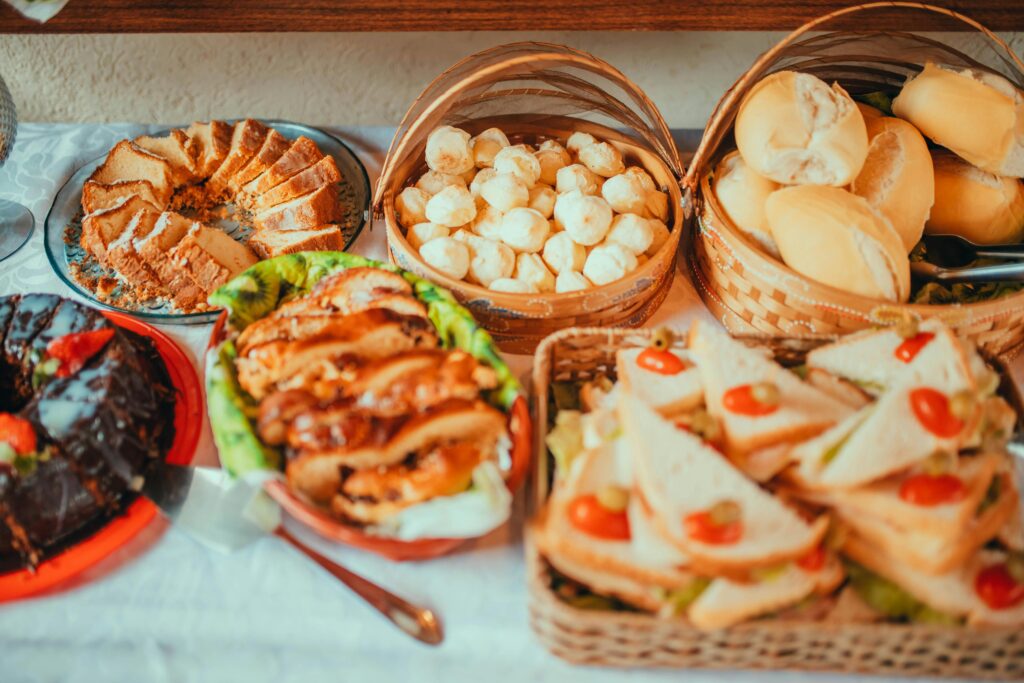Ever felt like you needed a warm-up before diving into something big? That’s exactly what Cheesefare Week is for Orthodox Christians. It’s the unique, transitional week that bridges the gap between ordinary time and the intense spiritual journey of Great Lent. Think of it as a liturgical “pre-game” that prepares your heart, mind, and soul for the challenges and blessings ahead.
In this blog, we’ll explore what makes Cheesefare Week so special, how it blends elements of Lent and regular time, and why it’s the perfect opportunity to ease into the Lenten season. Whether you’re new to Orthodoxy or a seasoned believer, this guide will help you make the most of this sacred week.
What is Cheesefare Week?
Cheesefare Week is the final week before Great Lent begins. It’s a time of transition, where the Church gently shifts our focus from the routines of daily life to the spiritual intensity of Lent. The week gets its name from the tradition of eating dairy products (like cheese) while abstaining from meat—a unique fasting practice that sets the tone for what’s to come.
This week is all about preparation. Just as athletes warm up before a race, Orthodox Christians use Cheesefare Week to spiritually and mentally prepare for the rigors of Lent. It’s a time to reflect, adjust, and set intentions for the journey ahead.
How is Cheesefare Week “Kind of Like” Great Lent?
Cheesefare Week offers a sneak peek into the Lenten experience. Here’s how it mirrors Great Lent:
Fasting with a Twist:
During Cheesefare Week, we fast from meat but are allowed to eat dairy, eggs, and other animal products. This partial fast is unique to this week and serves as a gentle introduction to the stricter fasting rules of Lent.
Yes, that means cheese pizza is allowed—even on Wednesday and Friday!
Lenten Liturgical Elements:
The Triodion, the liturgical book used during Lent, is introduced in Vespers and Matins. Its readings and hymns have a distinctly Lenten tone, preparing us for the themes of repentance and spiritual warfare.
The Prayer of St. Ephrem, a quintessential Lenten prayer, is recited at weekday Vespers starting on Tuesday evening.
Old Testament Readings:
On Wednesday and Friday, the usual Epistle and Gospel readings are replaced with selections from the Old Testament (Joel on Wednesday and Zechariah on Friday). These readings emphasize repentance and preparation, setting the stage for Lent.
No Divine Liturgy on Wednesday and Friday:
Just like in Great Lent, the Divine Liturgy is not celebrated on most weekdays during Cheesefare Week. Instead, the services focus on prayer, reflection, and Old Testament readings.
How is Cheesefare Week “Kind of Like” Regular Time?
While Cheesefare Week has many Lenten elements, it also retains some aspects of ordinary time:
Divine Liturgy is Celebrated:
Except for Wednesday and Friday, the Divine Liturgy is served with its usual Epistle and Gospel readings. This balance helps ease the transition into Lent.
Partial Fasting:
Unlike the strict fasting of Lent, Cheesefare Week allows dairy and other animal products (except meat). This makes the week feel less intense while still encouraging self-discipline.
Mixed Liturgical Tone:
While Vespers on Tuesday, Thursday, and Friday begin in a non-Lenten style, they end with Lenten prayers and the Prayer of St. Ephrem. This blend of tones reflects the week’s transitional nature.
Why is Cheesefare Week Important?
Cheesefare Week isn’t just a liturgical curiosity—it’s a vital part of the Lenten journey. Here’s why it matters:
It Prepares Us Spiritually:
The readings, prayers, and fasting practices of Cheesefare Week help us shift our focus from worldly concerns to spiritual growth.
It Eases Us into Lent:
By gradually introducing Lenten elements, Cheesefare Week helps us avoid feeling overwhelmed when Great Lent begins.
It Sets the Tone for Repentance:
The Gospel readings during this week focus on the Lord’s passion, foreshadowing the themes of Holy Week and Pascha. This reminds us that Lent is ultimately about preparing to meet the risen Christ.
How to Make the Most of Cheesefare Week
Want to fully embrace this transitional week? Here are some practical tips:
Follow the Fasting Guidelines:
Abstain from meat but enjoy dairy and other animal products. Use this time to experiment with simple, meatless meals that you can carry into Lent.
Attend Services:
Make an effort to attend Vespers, especially on Wednesday, to experience the unique blend of Lenten and non-Lenten elements.
Reflect and Set Intentions:
Use this week to prayerfully consider your goals for Lent. What passions do you want to work on? How can you deepen your prayer life?
Embrace the Joy of Preparation:
As the Lenten Triodion reminds us, “People, receive Lent with gladness!” Cheesefare Week is a time to approach Lent with anticipation, not dread.
A Prayer for Cheesefare Week
From the Lenten Triodion:
Faithful, let us receive with joy the divinely-inspired announcements of Lent!
Like Ninevites of old, like harlots and publicans who heard John preaching repentance,
Let us prepare ourselves through fasting for the Master’s communion in Zion!
Let us wash ourselves with tears of purification;
Let us pray to behold the fulfillment of Pascha, the true revelation!
Final Thoughts
Cheesefare Week is a gift—a gentle, joyful introduction to the Lenten season. By embracing its unique practices and rhythms, we can enter Great Lent with a prepared heart and a focused mind. So, let’s welcome this week with gladness, ready to embark on the spiritual journey that leads us to the glorious Resurrection of Christ.
Are you ready to dive into Cheesefare Week? Share your thoughts and plans in the comments below!

